Samsung Galaxy S20 vs. Galaxy S10: is it worth upgrading in 2020?
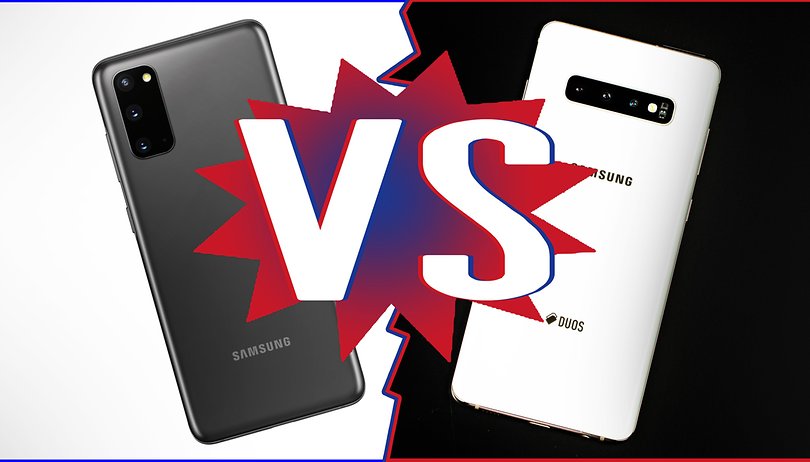

Every year in February Samsung presents new Galaxy-S models. In 2020, the South Koreans changed the naming scheme and adjust it to S20 according to the year. The flagships mark the changing of the guard in many store shelves and online shops, where they replace the Galaxy S10 family. In this comparison, we look at the main differences between the Galaxy S10 vs. S20 so you can decide if it's worth upgrading.
Shortcuts:
Galaxy S10 vs. S20: What is new?
The Galaxy S20 has a new look
The display bezels of the Galaxy S20 have become even narrower compared to those of the Galaxy S10. The hole for the selfie camera unfortunately did not disappear, but it got smaller and moved to the middle. The display grows marginally from 6.1 to 6.2 inches.
Samsung finally kills the unpopular Bixby button with the Galaxy S20 line. The power button and volume rocker move from left to right. The fingerprint sensor is still hidden under the display glass and works with ultrasound.
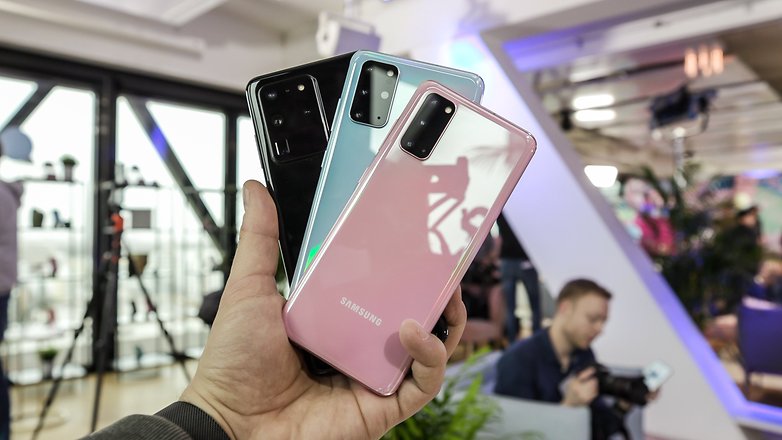
The most striking point is probably the external difference of the camera accumulation on the back. The armada of sensors and flashes comes in the best ceramic hob look, just like the iPhone 11 Pro. The old camera bar would not have been sufficient either, if you look at the increased number of sensors in the S20 compared to the S10.
The Galaxy S10 was introduced in black, white, blue or green starting at $999. Later silver and red were added. The Galaxy S20 initially has a pink option instead of the green one; the price (RRP) remains the same. New colors and gradients are usually added in the course of the year.
Technical specs: Galaxy S10 vs. S20
| Galaxy S10 | Galaxy S20 | |
|---|---|---|
| SoC | Qualcomm Snapdragon 855/Samsung Exynos 9820 | Qualcomm Snapdragon 865/Samsung Exynos 990 |
| Memory | 8 GB LPDDR4x RAM, 128 GB UFS 2.1 Flash | 8 or 12 GB LPDDR5 RAM, 128 GB UFS 3.0 Flash |
| Display | 6.1 inch, 3,040x1,440, AMOLED | 6.2 inches, 3,200x1,440, 120 Hz. (Full HD only), AMOLED |
| Battery | 3,400 mAh, Adaptive Fast Charge | 4,000 mAh, Adaptive Fast Charge |
| Camera |
|
|
| 4G/5G | Cat. 20 / n.a., Dual-Nano-SIM | Cat. 20 / optional, Nano+eSIM |
| Street Price | $749.98 | $999.99 |
Compared to the Galaxy S10, all variants of the Galaxy S20 are optionally (or as standard depending on the region) offered as 5G models. There are a lot of places where they will be switching on the 5G networks shortly after the market launch of the Galaxy S20. However, real benefits for smartphone users are unlikely to arise during the typical lifetime of a smartphone.
The Galaxy S20 display supports refresh rates of up to 120 Hz. The downside is that you will then have to reduce the resolution to Full HD. In the 6.2-inch display, you still get 355 PPI with this, at the normal viewing distance of 50 centimeters, thus more than enough for a normal human retina.
S10 vs. S20: Important improvements for 2020
Samsung has core refurbished the Galaxy S20 from a technical perspective. Chipset, RAM and flash memory are coming in a completely new generation and, thanks to double speed, are widening old bottlenecks. If you choose the 5G variant - which this time is available for every member of the S20 family - the mobile connection is also fit for the next generation Internet.
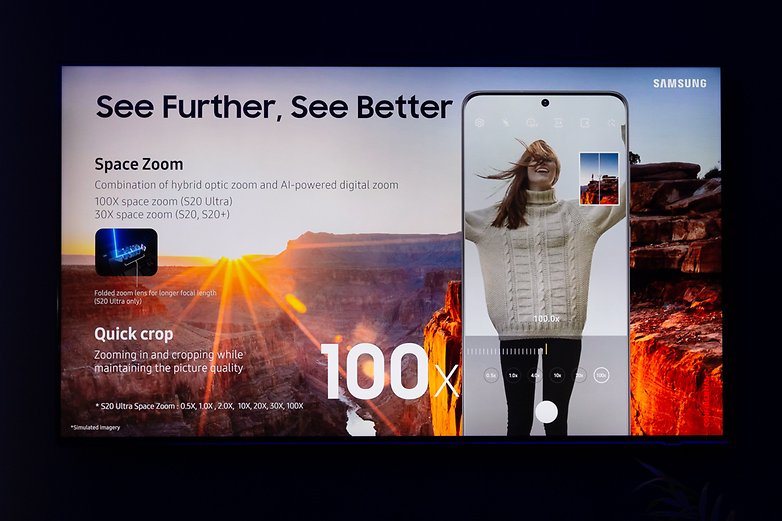
The cameras have been significantly upgraded, not so much on the hardware side as on the software side. Samsung works with marketing terms such as "Space Zoom" and promises 30x and sometimes 100x magnification. Physically, however, the magnification is only 1.06-times. Since the tech press - including us - have not yet received most of the samples, we owe you a real camera comparison S10 vs. S20. It is coming.
I expect considerably more power from the battery. It will grow from 3,400 to 4,000 mAh, or by 18 percent. However, since the cameras require significantly more processing power and the display in 120 Hz mode challenges the GPU more, the Galaxy S20 may have at most the same battery life as the Galaxy S10 in certain scenarios.
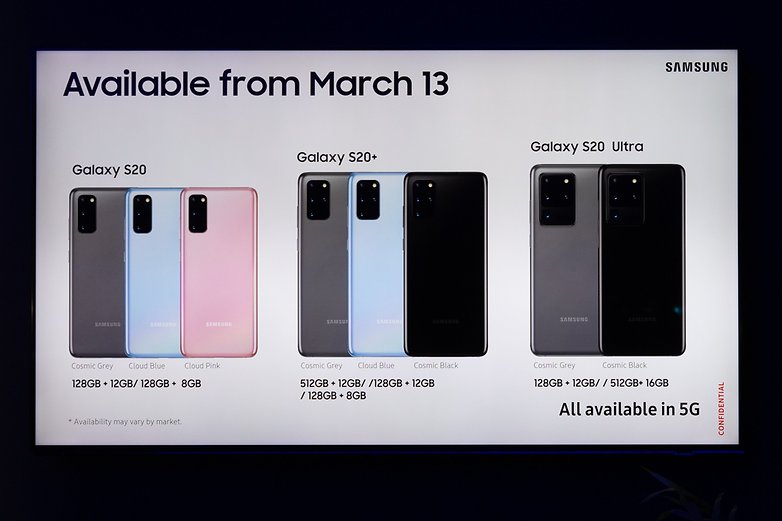
Galaxy S10 vs. 20: Old and new variants at a glance
| S10 | S20 | |
|---|---|---|
| Main model | Galaxy S10 | Galaxy S20 (5G optional) |
| Budget | Galaxy S10e | n.a. |
| Large | Galaxy S10+ | Galaxy S20+ (5G optional) |
| Larger | Galaxy S10 5G | Galaxy S20 Ultra (only 5G) |
| Lite | Galaxy S10 Lite | n.a. |
Let's talk about price. It has been predicted on the basis of old data that the price of the S20 would fall by 30 percent within five months. Then it would level off for a long time at a price of around $600 euros without a contract. The S10 will probably fall less sharply in price over the same period, which currently stands at around $600-$700. This means that an upgrade is most likely to be worthwhile in July, when you can sell the Galaxy S10 and buy the Galaxy S20 with an effective surcharge of about $150-$200.
Preliminary conclusion
According to our current state of knowledge, the surcharge is not worthwhile to buy the Galaxy S20 instead of the S10. The technical innovations do not look like something we could not wait at least another five months for. Because then the Galaxy S20 will have fallen to the current price of the S10, and then we'll know if the new camera is really as much better as we were led to believe at the press event.
This is especially true for the large, but unfortunately super expensive Ultra model. The Galaxy S20 Ultra places itself as a separate device class above its smaller siblings. With its own camera equipment, which looks much better on paper, it could offer a completely different user experience than the Galaxy S20 and S20+. And with its RAM and flash memory, it puts many a laptop in the shade. But all this must still be shown by the test and possibly an additional comparison.






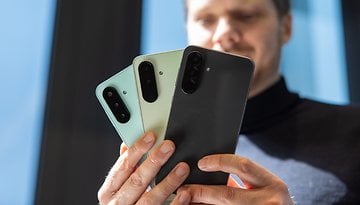




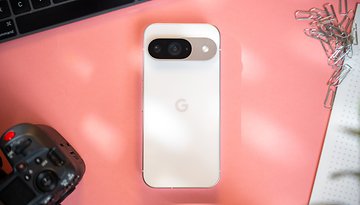








Go for iPhone, you never regret it.
I think S10 is better.
I think Oneplus 7 is the best choice
I agree with you